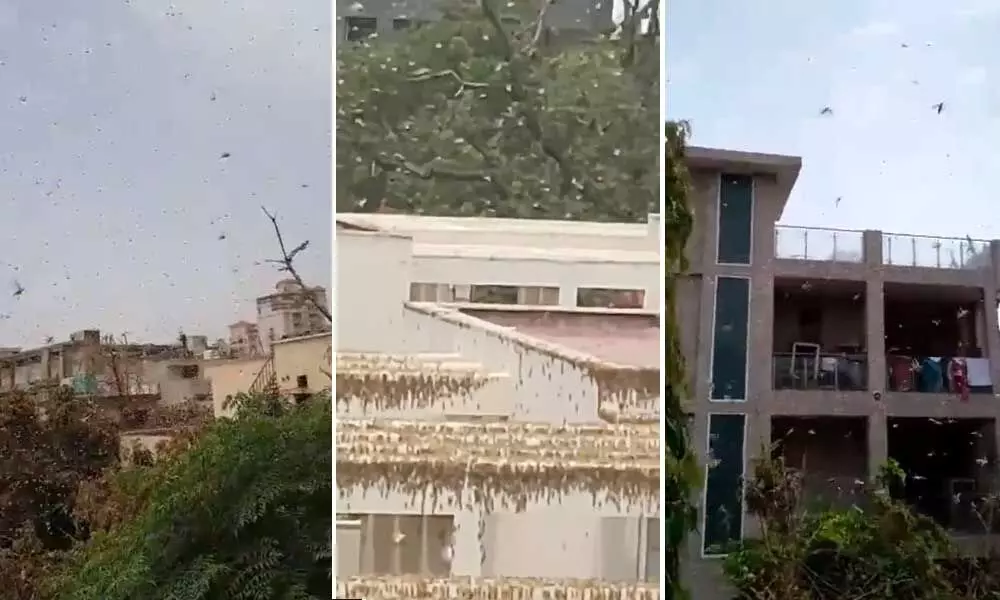Locust Swarms Descend On Gurugram In Haryana
 Locust Swarms Descend On Gurugram In Haryana
Locust Swarms Descend On Gurugram In HaryanaGiant locust swarms reached Gurugram on Saturday and covered vast areas in Haryana. Earlier, locust swarms had descended on Jhajjar in the state.
Gurugram: Giant locust swarms reached Gurugram on Saturday and covered vast areas in Haryana. Earlier, locust swarms had descended on Jhajjar in the state.
Gurugram residents shared images of huge locust swarms in the sky. Several busy areas were covered with locust swarms, reports stated.
Locals in Gurugram, are said to be employing the age-old method of banging plates and utensils, bursting crackers and creating loud noise in many ways to scare locust swarms. It is believed that locusts are sensitive to loud noise and get driven away when such noise is made.
Locust attacks were reported from other districts of Haryana including Jhajjar on Saturday. Twitter is abuzz with videos and images of locust swarms in Gurugram.
Seeing #LocustAttack videos from Gurgaon n wondering where are these locusts headed to next pic.twitter.com/hWfrncVXIO
— Sakshi (@savisakshi) June 27, 2020
https://twitter.com/kamalasripada/status/1276759821631451137?s=20
Rajasthan, Madhya Pradesh, Uttar Pradesh, Gujarat and Maharashtra had witnessed Locust attacks earlier this year.
Locusts on an average consume food in proportion to their own weight per day and can travelup to a distance of 150 km in a day depending upon wind speed. Anything green is food for alocust swarm including leaves, fruits, flowers, stems, bark and seeds. All kinds of cropsincluding rice, millets, sugar cane, maize, sorghum, barley, cotton, vegetables, rangelandgrasses, banana and pines are food for locust swarms.
#locustattack attacks in #Gurugram. it's near about Delhi 😱 #locustswarms pic.twitter.com/rj3MIlksxY
— Nikhil Choudhary (@NikhilCh_) June 27, 2020
The desert locust is native to the Arabian desert and climate change is believed to be one ofthe major factors driving it towards newer places. Earlier, locust swarms coming fromPakistan used to be confined to Rajasthan for the most part. This time around however, hugeswarm of locusts had earlier invaded Rajasthan, Madhya Pradesh, Uttar Pradesh, Gujarat andMaharashtra and have now descended on Haryana.
#HappeningNow Outside our balcony in Gurgaon phase 2. #locustattack pic.twitter.com/ipPp358mat
— Kamala Sripada (@kamalasripada) June 27, 2020


















